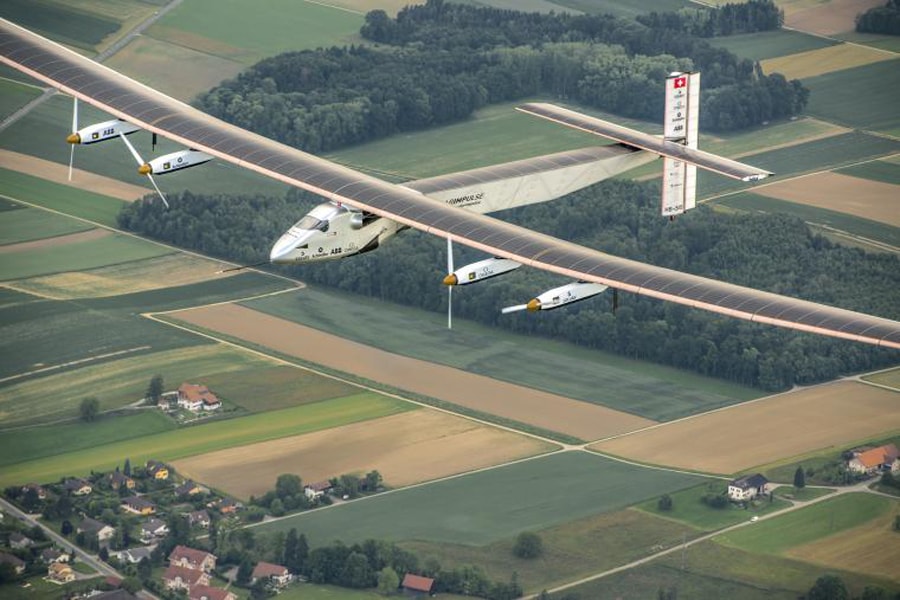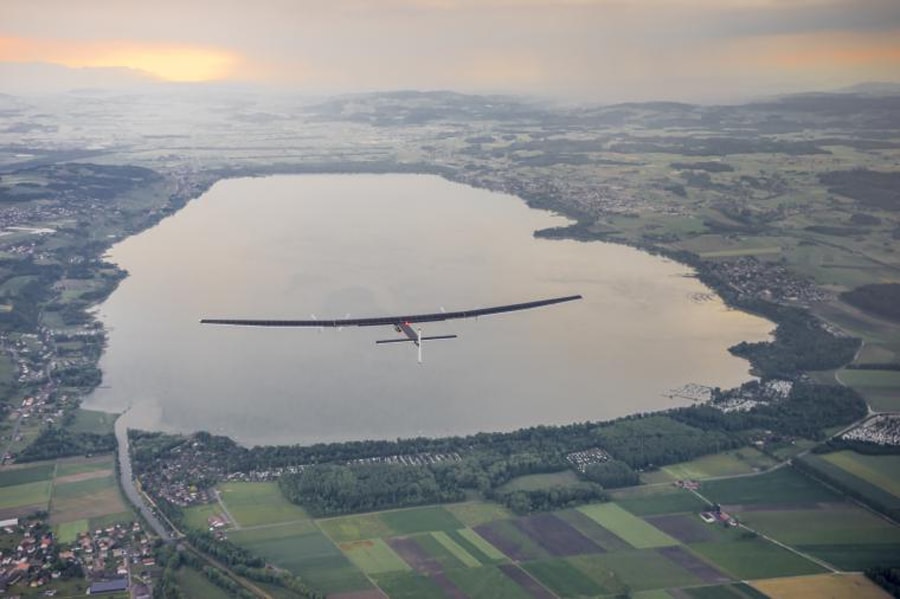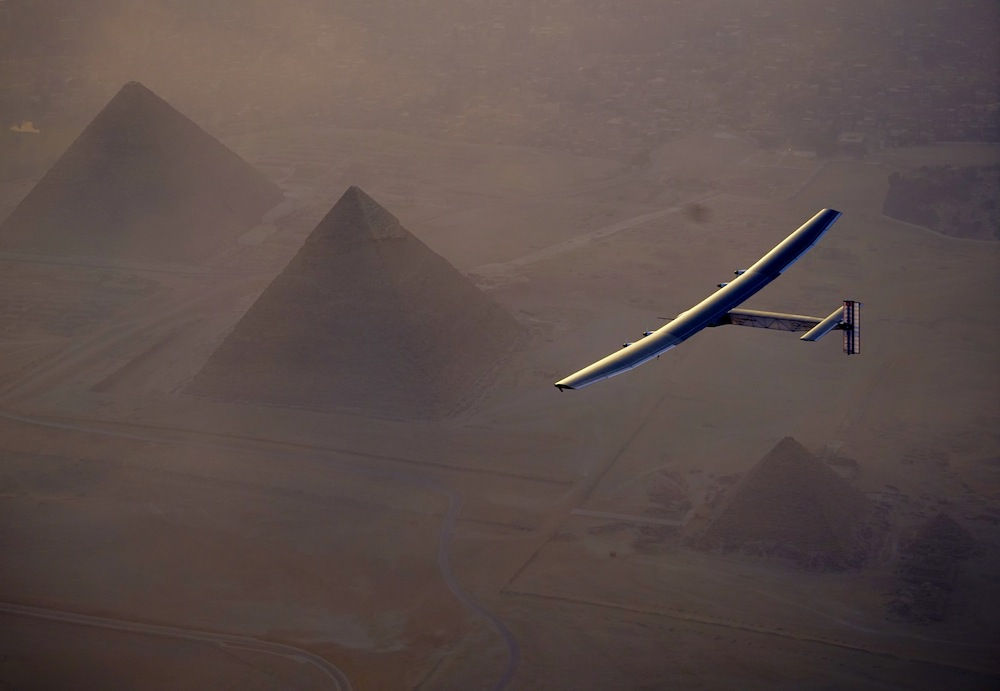Flight is something that human beings kind of take for granted now. We expect that it's possible to fly to almost any location on Earth (although some places do still present challenges). In fact, at any given moment, there are around 6,000 planes in the air (see for yourself here). That's amazing when you think about how long it took people to be able to fly in the first place.

Keep trying, buddy!
But as much as that plane didn't succeed, plenty of others did. And though it can seem otherwise, the age of invention isn't over. People are still trying to improve planes. Often that means planes that can fly faster with less fuel, or ones that are easier to control or are safer. But there's another way people are trying to change how we fly: using solar power.
An impulsive decision
In 2009, the Solar Impulse became the world's first successful fully solar-powered airplane. That's right. No fuel at all. Instead, that airplane used batteries powered by 11,000 solar cells placed on top of its wings and body. This first plane was flown on many test flights, including a flight all the way across the United States and an overnight flight. (That's a big deal if you're powered by the sun!)

(© Solar Impulse | Revillard | Rezo.ch)
An improved second model, the Solar Impulse 2, was completed in 2014. This plane is faster and larger, with over 17,000 solar cells powering its batteries. Now it is near the end of a journey that is even more incredible than anything the first model attempted. A circumnavigation of the planet. Yep, that means a flight clear around the world.
A unique design
To be clear, this isn't an especially fast plane. The Solar Impulse 2 has a top speed of about 140 km/h (87 mph). Its normal speed is about 90 km/h (56 mph) (even less at night). The point being this: for a modern airplane, this is a very slow vehicle (most jet airliners fly at around 900 km/h or 560 mph). But the Solar Impulse has some other unusual features. For one, it's very light, weighing about the same as a small car (can't say that about an Airbus 330). Then there is its wingspan (this is the distance across from one wingtip to the other). It is huge.
The wingspan of the Solar Impulse 2 is 71.9 m (236 ft). That's 3 metres wider than the wingspan of a Boeing 747, one of the largest airliners in history. Together, this huge wingspan and light weight allow the plane to fly. Because, for now at least, solar power simply doesn't have the ability to generate anywhere near the power of jet fuel.
Where to next?

The Solar Impulse 2. (© Solar Impulse | Revillard | Rezo.ch)
But one step at a time, right? Just as human flight once seemed next to impossible, a fully solar-powered plane was like science fiction until a few years ago. Today, the Solar Impulse 2 is near the finish line of a journey that began in March 2015, when the plane flew from Abu Dhabi to Oman. In between, the plane has flown across the Pacific and Atlantic Oceans (though it did need to stop in Hawaii for about a year to repair its batteries, which had overheated). Now as it waits to fly from Cairo, Egypt back to Abu Dhabi, it has almost finished the most incredible solar-powered journey in history.
Will a plane the size of a modern jet airliner ever be fully solar powered? That's a good question. Current science isn't even close to making it happen. But given how far flight has come in the last 100 years, I wouldn't bet against it!
 The Solar Impulse 2 flies over the pyramids of Egypt. This groundbreaking plane has nearly completed its journey around the world. (© Solar Impulse | Revillard | Rezo.ch)
The Solar Impulse 2 flies over the pyramids of Egypt. This groundbreaking plane has nearly completed its journey around the world. (© Solar Impulse | Revillard | Rezo.ch)










Super cool, very good for the environment! 😀
Actually modern science suggests that solar power isn’t all that good us 😐